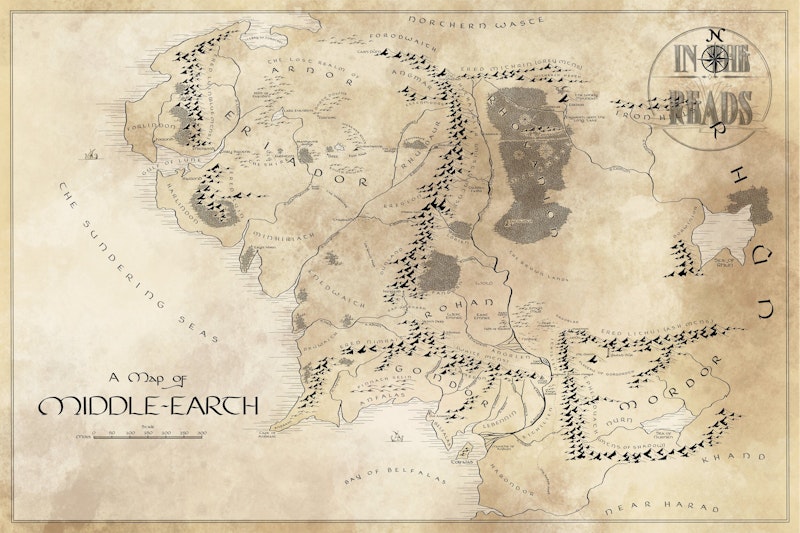My timing was off in my previous article. Just as I was proclaiming that Twitter (or X, though I can barely remember that name change), despite its current flaws, is still generally more worthwhile than other social-media platforms, Elon Musk maneuvered the network further into right-wing crank territory, with his endorsement of an assertion that Jews are whipping up anti-White sentiment. Jonah Goldberg has an essay that aptly explains how stupid such assertions are, which I found through Threads, a platform I’ve mostly ignored but to which I’ll give new consideration in light of X’s ongoing decline. Unfortunately, my low follower-count on Threads—23 as of this writing—may be a disincentive to posting there.
Lately I’ve been toggling back and forth between different social-media platforms, reading several books at a time, and generally seeking out sources of information I might’ve overlooked. I’ve spent some time on MasterClass (to which my wife gave me a year’s subscription), completing a course by mathematician Terence Tao and dabbling with offerings from, among others, George W. Bush and Noam Chomsky. As we live in an era of misinformation and motivated reasoning (working backwards from the desired conclusion), it’s important to pay attention to who’s saying what and with how much credibility.
As a fact-checker and copyeditor, as well as a writer, I spend a lot of time assessing whether things are true, or how true they are, or how confident one can be about them. Once, there was a fact-checking disaster when a magazine for which I was working ran a map of the world without India—just blue ocean where the country should be. I couldn’t remember if I’d been one of the people vetting the map before publication, which could mean I’d nothing to do with it, but could also mean I’d seen the map and failed to give it enough scrutiny even to remember I’d seen it. It’s possible to overlook gross errors if one’s attention is elsewhere, as in the experiment where people watch basketballs and overlook a gorilla.
I’ve spent some time lately fact-checking, and arguing against, assertions by Christopher James Stone in his recent Splice Today articles about the Middle East. I’ve pointed out what I consider to be substantial misinformation in these pieces, but I appreciate that Stone expressly welcomes the pushback. See most recently his interview with activist Hugh Lanning, titled “Disappearing Palestine,” and I encourage readers to consider critical sources about the widely-circulated maps of this “disappearance.”
An affinity for maps runs in my family. In my youth, I’d pick up William Shirer’s The Rise and Fall of the Third Reich, from a shelf by a living-room armchair. It had maps in the inner front and back covers showing, respectively, Nazi Germany at its height and the Allied counter-invasions that destroyed it.
Geography brought about a frustrating encounter with bureaucracy recently. Seeking to find a high school in North Jersey willing to host our 13-year-old son in taking the AP Human Geography Exam (something he’s studying for with an online tutor, as AP courses and tests aren’t currently given at the private school he attends), I received various reasons why it couldn’t be done. These ranged from the plausible (too many of one school’s own students currently enrolled to administer an exam to an outside student) to the odd (only giving tests to outsiders in courses the school doesn’t offer, when you’d expect the opposite) to the unpalatable (unwilling to test a middle-schooler, for no stated reason).
One of the two high schools in our home district couldn’t be bothered to reply to my inquiry, though I felt a twinge of sympathy as I read articles about how the once-prestigious district’s in turmoil, with “parental-rights” board members and audience activists berating administrators (who’ve been responding with an exodus to less-benighted districts) for “leftist” activities such as mental-health services. Meanwhile, we signed up our son to take the test at his tutor’s school, in Colorado.
My wife and son will travel to Colorado in the spring. I’ve never been to Colorado, at least by my definition. Long ago, I visited Four Corners with my then-girlfriend, but unlike her, I was too inhibited to get on my hands and knees with an appendage in each state, which arguably doesn’t count as visiting all four states even if one does it. Years later, as it happens, I read there was some surveying mix-up such that the real intersection of Colorado, New Mexico, Utah and Arizona was some distance away. Another time, I was on a flight that had a stop at the Denver airport, but I never got off the plane. I don’t claim to have visited Kentucky, either, though I once walked through the Cincinnati airport, which is not in Ohio. But whether it’s “true” to say I’ve never been to Colorado, or to Kentucky, is a debatable proposition.
An absorbing book I read recently is Tolkien in the Twenty-First Century: The Meaning of Middle-Earth Today, by Nick Groom. Tolkien drew maps as a key part of creating Middle-Earth (or, more broadly, Arda, the world of which Middle-Earth is a continent). Tolkien was a pioneer of world-building, and as Groom shows, one way he made his world engaging was by leaving many things murky or subjective; for instance, people and places were often known by varying names, depending on who observed them.
Well-crafted fictional worlds, one suspects, draw benignly on an appeal similar to one that makes malevolent propaganda and conspiracy theories attractive: a sense that there’s real history and geography that one didn’t know about, and that powerful dark forces are shaping the scene.
—Follow Kenneth Silber on Threads: @kennethsilber

